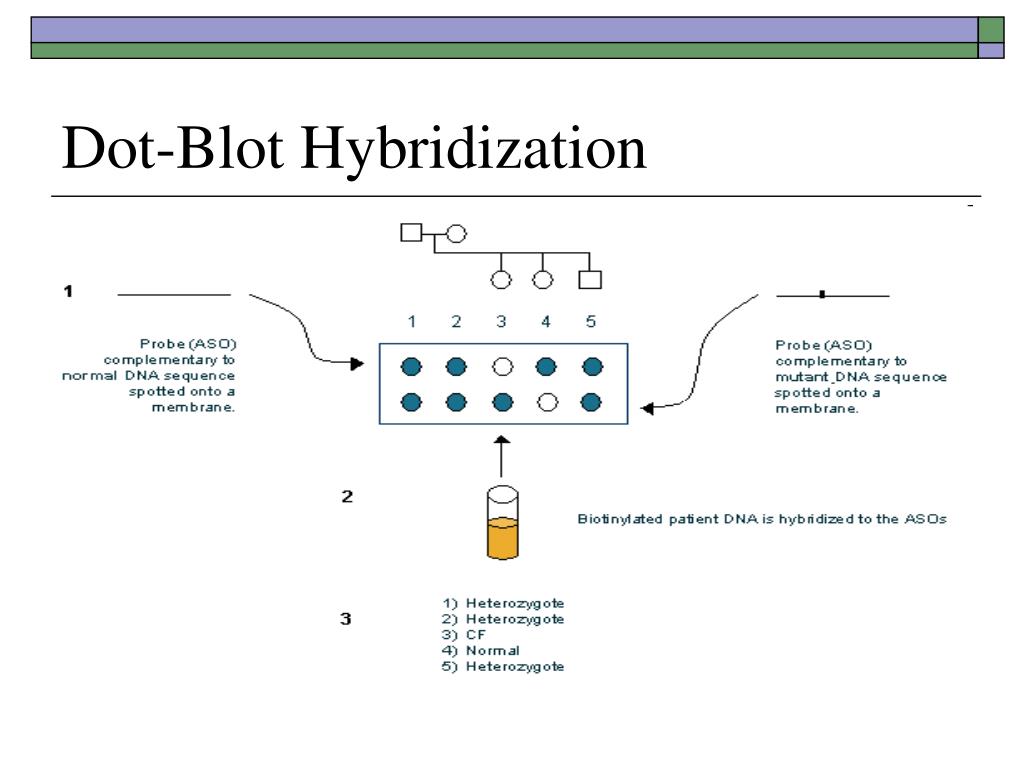

Sambrook J, Russell DW (2001) Molecular cloning: a laboratory manual, 3rd edn. Roy BP, Abou Haidar MG, Alexander A (1989) Biotinylated probes for the detection of potato spindle tuber viroid (PSTV) in plants. Rigby PWJ, Dieckmann M, Rhodes C, Berg P (1977) Labeling deoxyribonucleic acid to high specificity by nick translation with DNA polymerase I.

Owens RA, Diener TO (1981) Sensitive and rapid diagnosis of potato spindle tuber viroid disease by nucleic acid hybridization. Maule AJ, Hull R, Donson J (1983) The application of spot hybridization to the detection of DNA and RNA viruses in plant tissues. Gillespie D, Spiegelman S (1965) A quantitative assay for DNA/RNA hybrids with DNA immobilized on a membrane.

Garger SJ, Turpen T, Carrington JC, Morris TJ, Jordan RL, Dodds JA, Grill U (1983) Rapid detection of plant RNA viruses by dot-blot hybridization. Science 161:529–540įeinberg AP, Vogelstein B (1983) A technique of radiolabeling DNA restriction fragments to high specific activity. Proc Natl Acad Sci U S A 77:6851–6855īritten RJ, Kohne DE (1968) Repeated sequences in DNA. Ann Appl Biol 127:321–328īrandsma J, Miller B (1980) Nucleic acid spot hybridization: rapid quantitative screening of lymphoid cell lines for Epstein-Barr viral RNA. Proc Natl Acad Sci U S A 74:5350–5354īlok VC, Ziegler A, Scott K, Dangora DB, Robinson DJ, Murant AF (1995) Detection of groundnut rosette umbravirus infections with radioactive and non-radioactive probes to its satellite RNA. Key wordsĪlwine JC, Kemp DJ, Stark GR (1977) Method for detection of specific RNAs in agarose gels by transfer to diazobenzyloxymethyl paper and hybridization with DNA probes. If non-radioactive labels are used, then suitable detection methods through either chromogenic or chemiluminescence is used. If radioactive probes are used, then the detection is done through autoradiography.

The labels can be either radioactive or non-radioactive. The RNA probes are labelled by in vitro transcription. The DNA probes may be labelled using different methods, namely nick translation, random primed labelling or by polymerase chain reaction. The process involves isolation of nucleic acid from test plant it’s spotting on a membrane, pre-hybridization, hybridization using labelled probe and their detection. The double-stranded hybrid molecule is then detected using appropriate method depending on the reporter molecule used. The labelled probe is then allowed to form hybrid with nucleic acid isolated from the test plant. In this assay, a probe which is a single-stranded nucleic acid (either DNA or RNA) is ‘labelled’ with a reporter molecule. It is based on the homology between two strands of nucleic acid (DNA:DNA, DNA:RNA or RNA:RNA). Although the method is likely to result in an underestimation of latent and subclinical HPV infections, it is useful for studying the clinical HPV infections as well as other viral infections known to be present in exfoliated cells.The dot-blot hybridization is a nucleic acid hybridization technique where complementary single-stranded sequences of the probe (either RNA or DNA) hybridizes with single-stranded sequences of the test samples (either RNA or DNA) under suitable conditions of temperature and salt concentration. The results indicate that oral mucosal scraping results in adequate number of cells for dot blot hybridization with HPV DNA. In 3 cases the genital mucosa harboured the same HPV type as found in the oral cavity. HPV 6 was the most common (3.1%) type, followed by HPV 11 and 16 (1.1%). All other oral HPV positive subjects had clinically healthy mucosa. Of these, only 2 had clinical lesions indicative of HPV. Hybridization with 32P-labelled HPV DNA probes showed that 3.8% of the 309 women had an oral HPV infection. Based on hybridization with the 32P-labelled Alu-repeat probe, most samples contained more than 10(5) cells, which is an adequate number of cells for dot blot hybridization. The objective was to test the usefulness of oral mucosal scrapings (3 sequential swabs) in HPV DNA detection by dot blot hybridization. The presence of human papillomavirus (HPV) types 2, 6, 7, 11, 13 and 16 DNA in cytologic scrapings of oral mucosa was studied in 309 women with genital HPV infections.


 0 kommentar(er)
0 kommentar(er)
